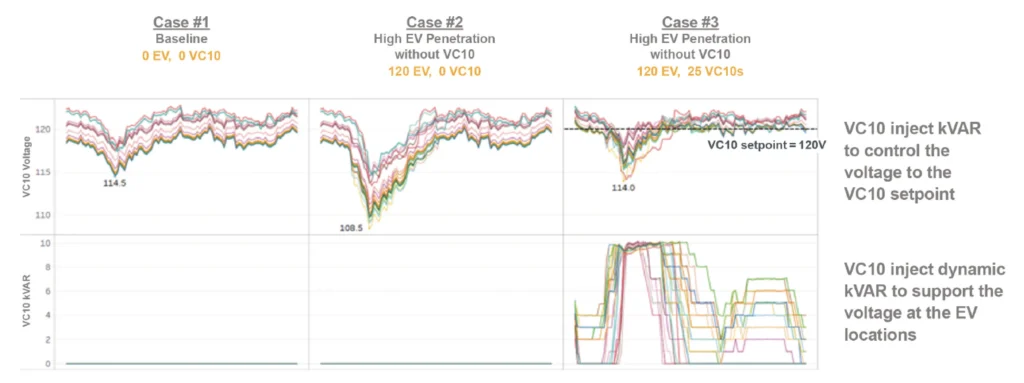Optimizing Voltage for Electric Vehicle (EV) Charging
Sentient Energy Grid Edge ControlTM
The VC10 and Ample software work together to create the Grid Edge Control solution. The VC10 is a single-phase dynamic VAR compensator that autonomously injects up to 10 kVAR in 1 kVAR increments. Ample software provides real-time visibility of edge voltages, aggregates data, and enables remote configuration of VC10 devices.

How It Works
The VC10 can be installed with either an overhead or underground distribution transformer and Ample is installed at the utility operations facility or can be hosted in the cloud. Here’s how the Grid Edge Control system works for EV charging:
- EV Causes Voltage to Sag – In the graphic above EV charging causes voltage to sag with minimum voltage dipping six volts from 114.5V to 108.5V. For lower rated transformers just a few EV chargers can overload the transformer.
- kVAR Injection – The VC10 dynamic VAR compensators sense the voltage sag and inject kVARs on a sub-cycle basis. This fixes low voltage outliers and compresses the voltage profile in the network.
- Voltage Profile Improved – The VC10 addresses the voltage sag caused by EV charging and improves and maintains the voltage profile above the ANSI-A voltage limit (114V).
Results
Sentient Energy’s Grid Edge Control solution improves the voltage profile at distribution transformers serving EV charging. This improves power quality and reduces flicker during charging and reduces strain on transformers extending their useful lives. With Grid Edge Control utilities can effectively address increasing EV charging loads with existing distribution assets.
